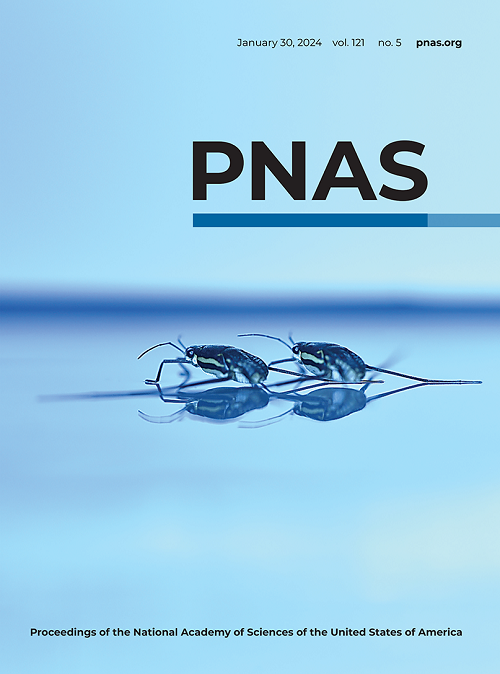Hierarchical communities in the larval Drosophila connectome: Links to cellular annotations and network topology
IF 9.1
1区 综合性期刊
Q1 MULTIDISCIPLINARY SCIENCES
Proceedings of the National Academy of Sciences of the United States of America
Pub Date : 2024-09-13
DOI:10.1073/pnas.2320177121
引用次数: 0
Abstract
One of the longstanding aims of network neuroscience is to link a connectome’s topological properties—i.e., features defined from connectivity alone–with an organism’s neurobiology. One approach for doing so is to compare connectome properties with annotational maps. This type of analysis is popular at the meso-/macroscale, but is less common at the nano-scale, owing to a paucity of neuron-level connectome data. However, recent methodological advances have made possible the reconstruction of whole-brain connectomes at single-neuron resolution for a select set of organisms. These include the fruit fly,果蝇幼虫连接组中的分级群落:与细胞注释和网络拓扑的联系
网络神经科学的长期目标之一是将连接组的拓扑特性(即仅由连接性定义的特征)与生物体的神经生物学联系起来。其中一种方法是将连接组特性与注释图进行比较。这种类型的分析在中/宏观尺度上很流行,但在纳米尺度上却不太常见,因为神经元级的连接组数据很少。不过,最近的方法学进步使得为一组特定生物重建单神经元分辨率的全脑连接组成为可能。这些生物包括果蝇、黑腹果蝇及其发育中的幼虫。除了连接性的精细描述外,这些数据集还附有丰富的注释。在这里,我们使用随机块模型的变体来检测果蝇幼虫连接组中的多级群落。我们发现,群落根据功能和细胞类型对神经元进行分区,而且大多数群落的相互作用是同类的,这反映了功能隔离的原则。然而,少数群落的相互作用是非同类性的,它们形成了一个由中间神经元组成的 "丰富俱乐部",这些中间神经元接收感觉/上升输入,并沿着下降通路输出。接下来,我们研究了群落结构在形成通讯模式中的作用。我们发现,多突触信号在模块分级中遵循特定的轨迹,而中间神经元在模块和分级之间的通信线路中起着关键的中介作用。我们的研究表明,系统级架构与单个神经元的生物功能和分类之间存在关系。我们认为,我们的研究是弥合脑科学中复杂系统与神经生物学研究之间差距的重要一步。
本文章由计算机程序翻译,如有差异,请以英文原文为准。
求助全文
约1分钟内获得全文
求助全文
来源期刊
CiteScore
19.00
自引率
0.90%
发文量
3575
审稿时长
2.5 months
期刊介绍:
The Proceedings of the National Academy of Sciences (PNAS), a peer-reviewed journal of the National Academy of Sciences (NAS), serves as an authoritative source for high-impact, original research across the biological, physical, and social sciences. With a global scope, the journal welcomes submissions from researchers worldwide, making it an inclusive platform for advancing scientific knowledge.

 求助内容:
求助内容: 应助结果提醒方式:
应助结果提醒方式:


